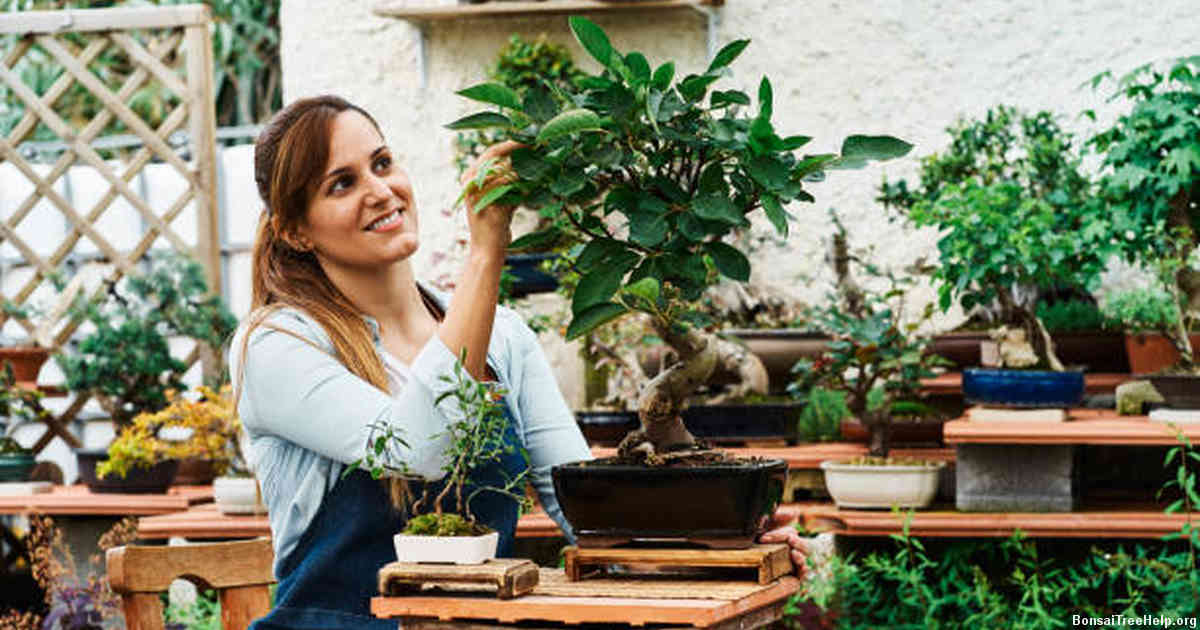
Bonsai are living organisms and, like any other plant, there can be a variety of reasons why it is shedding its leaves. It could be due to stress caused by environmental factors such as too much sun or not enough water. Inadequate fertilization, improper pruning and root disturbances can also lead to leaf loss. Certain pests and diseases such as aphids, mites and fungi can cause the tree’s leaves to shed prematurely. To determine why your bonsai is shedding its leaves, take a close look at the tree’s environment. Inspect for signs of disease or damage that may indicate an underlying issue with the tree itself. If you cannot find anything wrong then it’s likely just a natural reaction to changing seasons or temperatures in the area where it is located.
Contents:
- Understanding the natural shedding process of bonsai leaves
- Identifying potential environmental factors that may cause leaf loss
- Common pests and diseases that affect bonsai foliage
- Maintaining proper watering and fertilization to prevent leaf drop
- Assessing soil quality and drainage for healthy bonsai growth
- How pruning and wire training can impact leaf retention in bonsai
- Seeking professional assistance for persistent or severe leaf loss issues
Understanding the natural shedding process of bonsai leaves
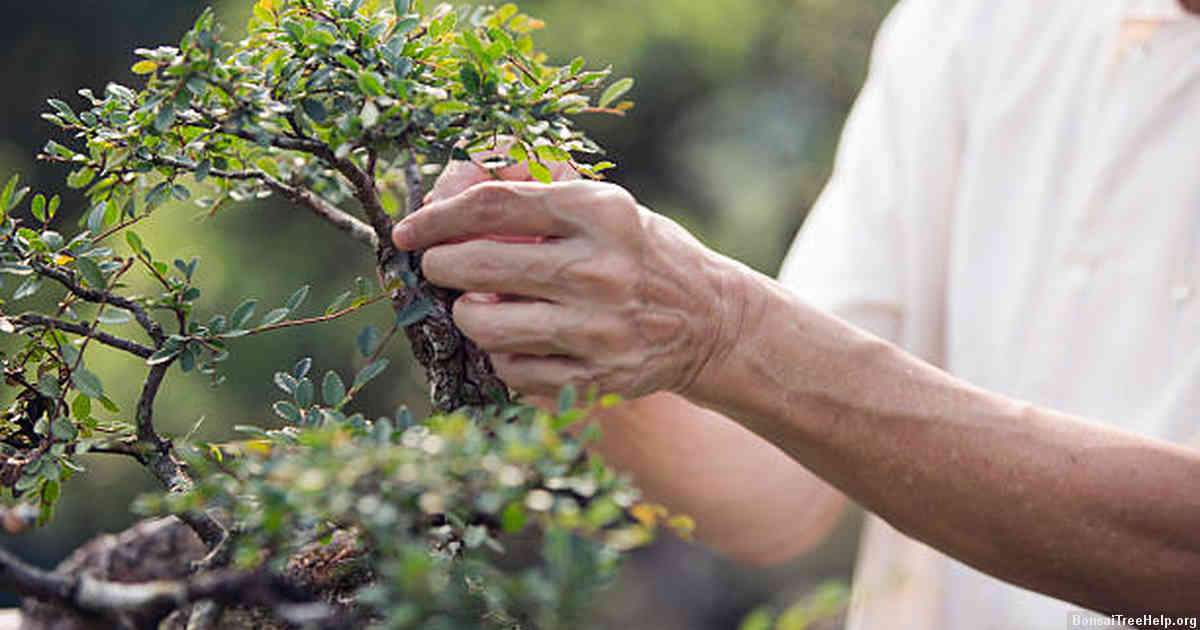
The shedding of leaves is an important part of the natural life cycle of a bonsai. As temperatures drop and seasons change, it is common for older leaves to fall off so that new, healthier ones can emerge and thrive. This process can be accelerated in colder climates or during winter months when direct sunlight diminishes. In warmer climates, your bonsai may shed their leaves all year round depending on their species and location.
It is important to understand the environment your bonsai resides in as sudden changes in temperature or too much water can cause it to shed more than its typical amount of leaves. Keeping track of environmental factors such as humidity and moisture levels will help you properly care for your bonsai and make sure that any leaf dropping is within normal limits. Adding nutrition through fertilizers every month or so will help promote healthy growth cycles by supplying essential nutrients and minerals necessary for optimal plant health throughout its lifespan.
It’s important to note that incorrect pruning techniques may also result in excess leaf shedding which could lead to long-term damage if left unaddressed. Professional pruners will always use specific tools like precision scissors to properly trim back branches without harming the plant; novice gardeners are encouraged to brush up on their technique before attempting DIY pruning projects so as not to disrupt the natural growth patterns of a bonsai tree unknowingly.
Identifying potential environmental factors that may cause leaf loss
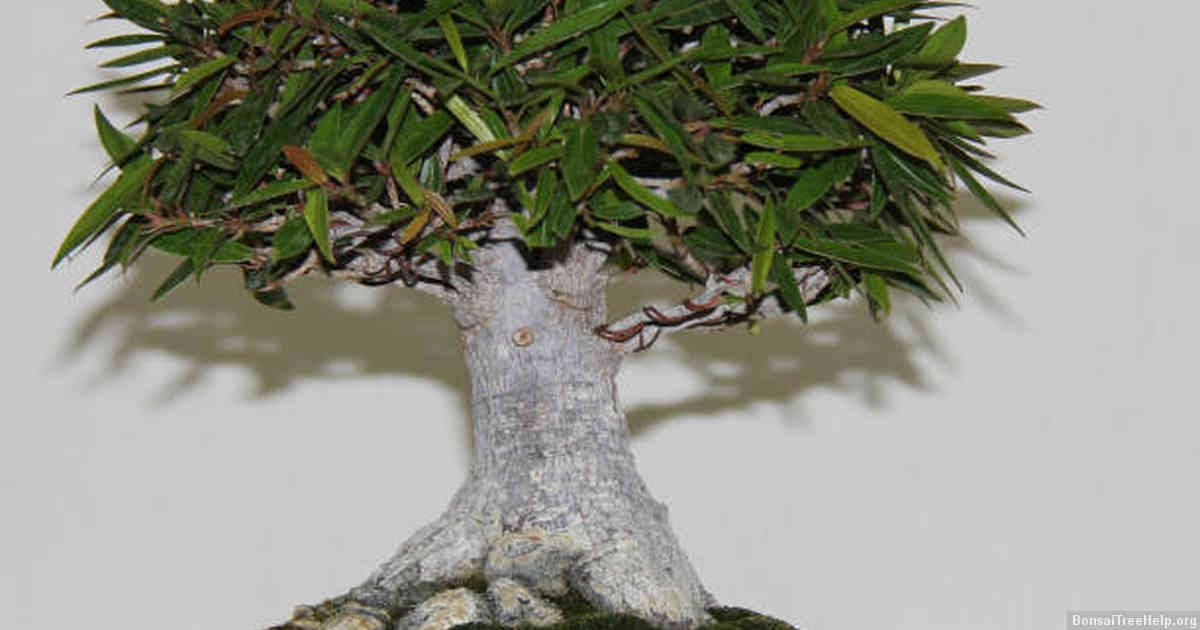
While bonsais are known for their intricate design, creating a well-crafted piece of art requires attention to detail and ongoing maintenance. If your bonsai is losing leaves, it may be due to environmental factors such as temperature fluctuations, light exposure, or incorrect watering patterns.
The ideal indoor temperature for a bonsai should remain constant; the tree cannot handle any drastic changes in heat. If you notice that the area where your bonsai is situated is getting colder than usual during specific times of day or seasonally, then that could be an issue leading to leaf loss. In addition to adjusting temperature accordingly, providing additional lighting can also help to ensure that the tree receives enough energy in order to keep up with growth demands and other physiological processes. Although natural sunlight provides optimal levels of illumination for your bonsai’s photosynthesis needs, if you are unable to place it outside often enough or at all then you will need additional lighting in order to supplement the tree’s light requirements indoors.
Watering incorrectly can cause both over-and under-watering issues which can lead directly to leaf loss from a lack of moisture or root rot from too much water being available at once. Depending on what type of soil medium and potting container you are using for your bonsai as well as how large it is and its location in terms of sunlight exposure and air flow will affect the amount of water needed so pay close attention when irrigating your tree. Generally speaking though when it comes time to water your plant make sure that the entire soil has been sufficiently moistened but not drowning; remember: small amounts more frequently rather than larger ones less often.
Common pests and diseases that affect bonsai foliage
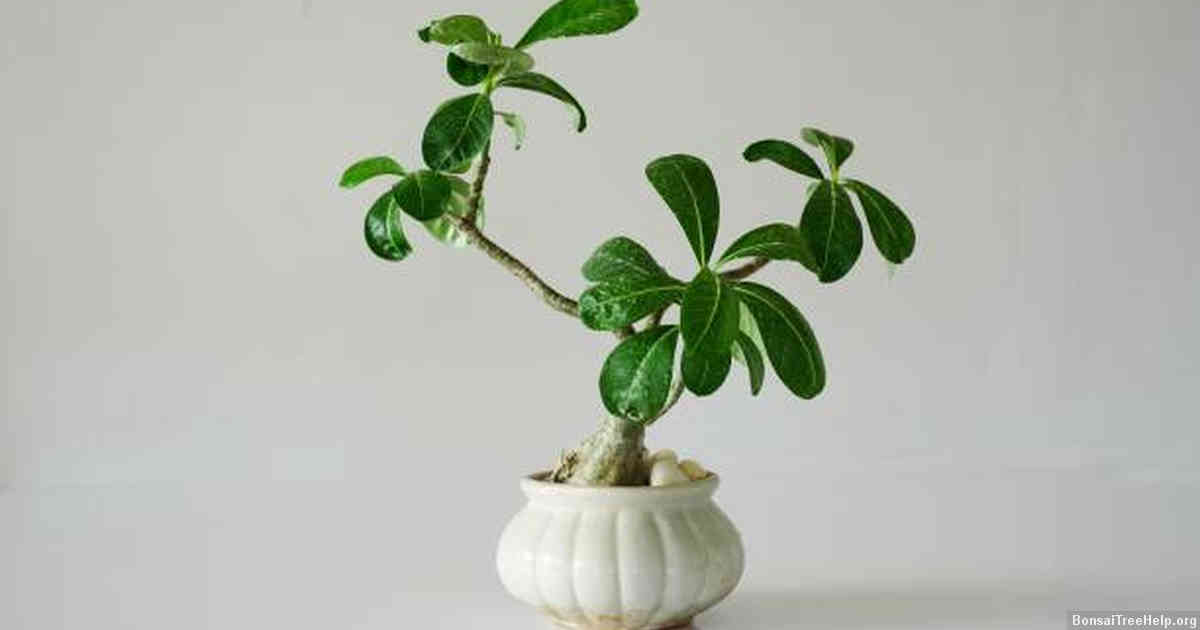
As one of the more delicate and fragile indoor plants, bonsai must be maintained with great care. They can require a lot of attention, as even subtle changes in their environment may cause issues. One common issue that arises is when your bonsai starts to shed its leaves unexpectedly. In this case, it’s important to diagnose the cause before proceeding further.
Unfortunately, pests and disease can sometimes plague bonsai foliage. Unhealthy plants are often prone to attack by insects such as aphids or scale bugs which feed off of leaves and shoots or bore into woody parts of the plant. Spider mites are able to damage foliage by extracting sap from small holes they create on the undersides of leaves; eventually causing leaf yellowing or death due to chlorosis caused by mineral deficiencies in depleted soil nutrients.
The best way to protect a bonsai against these threats is prevention through regular maintenance including weekly inspections for signs of infestation while pruning away dead branches and maintaining healthy growth patterns at appropriate levels of nutrition. If an insect infestation does occur, treat it quickly using either homemade remedies such as dish soap mixed with water applied directly onto affected areas or an organic pesticide suitable for application within an enclosed area like a home or apartment building interior space – contact professional pest control companies if severe problems persist beyond DIY treatments.
Maintaining proper watering and fertilization to prevent leaf drop

Proper watering and fertilization are essential to keeping your bonsai healthy. Too little or too much water can be detrimental, leading to stress and leaf drop. To ensure proper hydration levels, the soil should be damp but not wet. Letting the top layer of soil dry before re-watering is a good way to maintain healthy moisture levels in your bonsai’s soil.
Fertilizing with a high nitrogen fertilizer every month during spring and summer also aids in promoting lush foliage growth. However, taking care not to overfertilize is important as an overdose of fertilizer will easily lead to yellowing leaves and eventually shedding them off. It is best practice to use half strength of what’s recommended on the package whenever giving your bonsai its nutrient boost throughout the season.
Adequate sunlight exposure is paramount when it comes to keeping leaf drop in check for your bonsai tree. Insufficient light means stunted foliage development which can further aggravate excessive leaf shedding. If you cannot keep the tree outdoors all year round, consider purchasing artificial lighting for the winter months when natural light hours are short.
Assessing soil quality and drainage for healthy bonsai growth
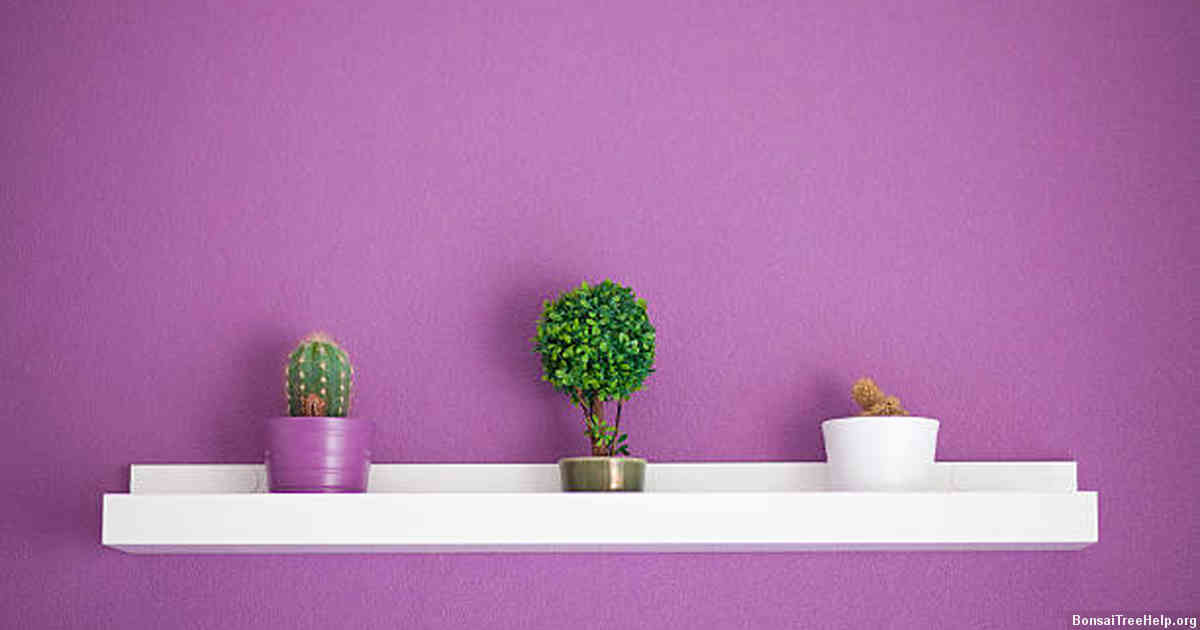
Plants need specific soil conditions in order to thrive, and bonsais are no different. Proper soil quality is one of the most important factors when it comes to caring for a bonsai tree and keeping it healthy; hence why assessing the soil is essential if your bonsai is shedding leaves. The two main components that should be evaluated are drainage and aeration.
If there’s too much water or not enough water, your bonsai won’t survive over time – you want enough of both so that the roots can absorb nutrients properly. Inadequate drainage will lead to root rot, while lack of moisture will stunt growth and cause leaves to turn yellow or brown then eventually fall off. If you suspect this may be the issue with your tree, you’ll want to check the soil for any pooling after watering or during rainstorms – as well as testing its pH level (acidity). It should also have fine particles for proper aeration allowing oxygen into the plant’s system.
In addition to looking at existing physical characteristics of soil, adding substances such as compost or fertilizer can help amend areas lacking in adequate nutrition. Finding a balance between having moist but not overly wet soils means using an appropriate amount of water and applying organic matter periodically throughout the year (such as mulch or leaf humus). With these steps taken, you should hopefully find yourself with a flourishing and happy bonsai.
How pruning and wire training can impact leaf retention in bonsai
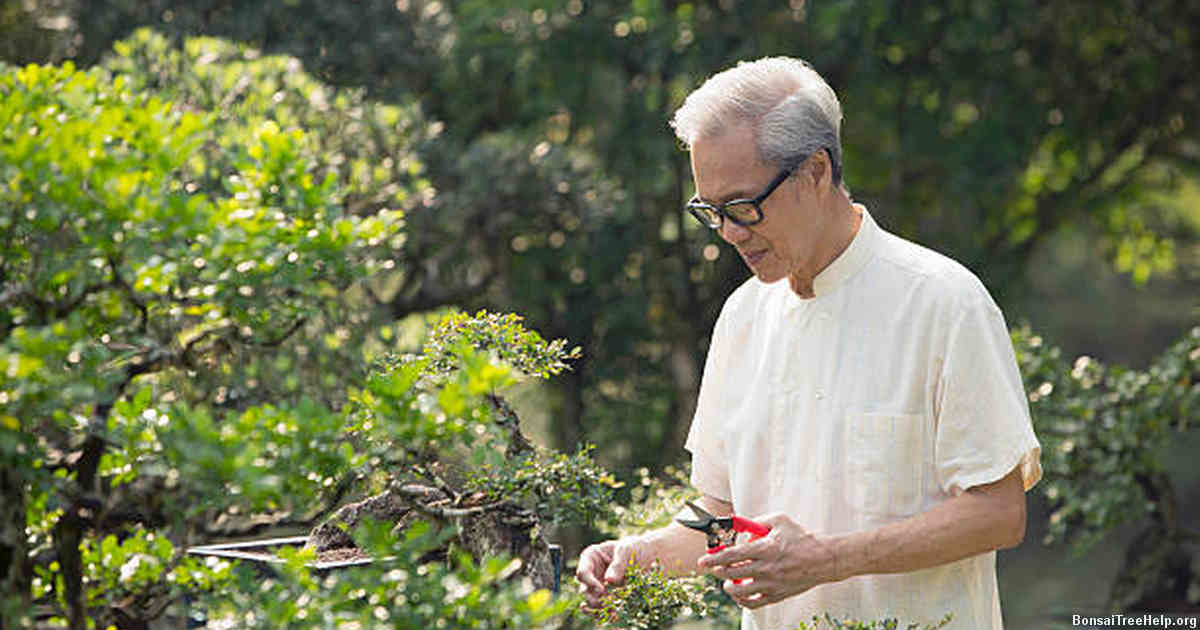
Pruning is an important part of keeping your bonsai healthy and ensuring a full, lush canopy. By carefully cutting away unwanted growths, the bonsai can be trained to grow in the desired shape while maintaining its compact size. Pruning also helps remove old, dead leaves and promote new growth. However, it is possible to prune too much or incorrectly which can result in leaf drop as well as stunting or distortion of the tree’s growth pattern.
One technique used by bonsai professionals is wire training, or wiring. Wire training allows for precise control over how the tree grows, allowing for complex shapes and designs to be achieved. Wires are applied around branches or stems so that when tightened they force them into whatever shape is desired. If done correctly and not left on for too long however this technique can help retain more leaves than what would normally fall off due to natural shedding from a healthily trimmed tree.
Excess water or fertiliser can impact leaf retention in bonsai trees, both leading to increased stress within the plant and subsequently increased leaf shedding rates if not balanced out correctly. It’s important therefore that watering and feeding regimes are established based upon data such as species type and season conditions so that best results can be achieved without risking potential damage to your prized bonsai specimen.
Seeking professional assistance for persistent or severe leaf loss issues
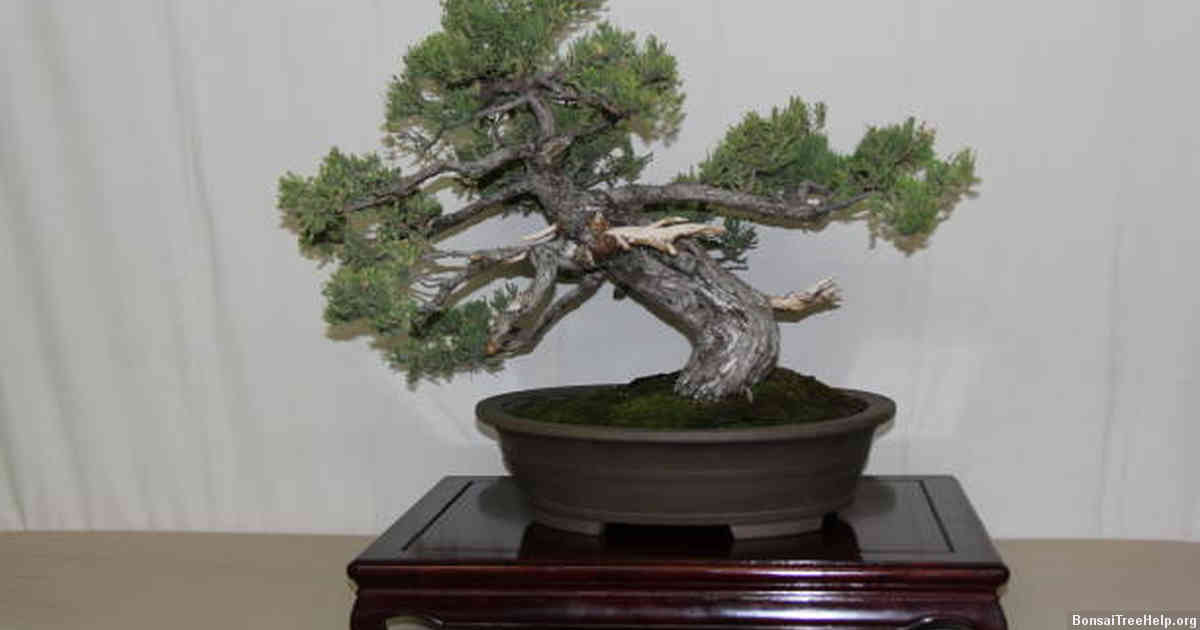
If your bonsai is suffering from chronic or severe leaf loss that you haven’t been able to remedy yourself, it may be a good idea to seek the help of an experienced professional. Working with a knowledgeable bonsai expert can offer greater insight into what might be causing your plant’s problems and how best to treat them. This could mean removing diseased foliage or reshaping branches in order to restore balance or creating more favourable growing conditions. Taking this step can also provide peace of mind that you’re doing everything possible for your precious bonsai tree.
Such professionals have likely already dealt with similar issues many times before, making them uniquely placed to advise and diagnose the causes behind persistent leaf shedding on your particular variety of bonsai. They often have access to specialised treatments – such as nutrient-rich fertilisers – which aren’t typically available in stores and could offer just the boost your plant needs to recover quickly and get back on track.
Seeking professional assistance can enable timely identification and treatment of any pests or diseases affecting your bonsai without delay. Not only will this maximise the chances of successful recovery but may prevent further infection spreading amongst other plants in its vicinity too.
Leave a Reply